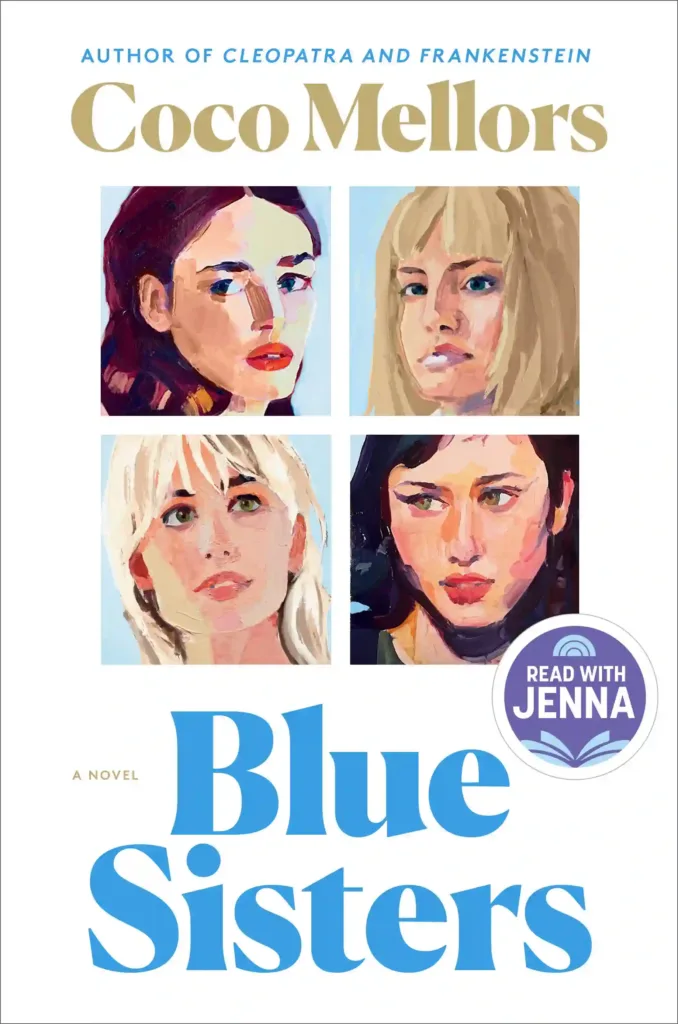Blue Sisters Book Summary
“Blue Sisters” introduces us to the three surviving Blue sisters: Avery, Bonnie, and Lucky, each exceptional and exceptionally different. Avery, the eldest, has seemingly turned her life around, working as a lawyer in London with her wife after recovering from heroin addiction. Bonnie, the fiercely independent middle sister, is a former boxer now working as a bouncer in Los Angeles, haunted by a past defeat. Lucky, the glamorous youngest, models in Paris, desperately trying to outrun her hard-partying tendencies. The unexpected death of their fourth sister, Nicky, a year prior, has left a gaping hole in their lives and sent them reeling in their own ways. Now, they are forced to return to their shared childhood apartment in New York City to prevent its sale. This homecoming becomes more than just a logistical task; it’s a confrontation with their shared past, their individual struggles with grief, addiction, and their own ambitions, and the intricate web of their sisterly relationships. As they navigate the familiar spaces of their upbringing and the raw emotions surrounding Nicky’s death, the sisters are forced to reckon with the disappointments of their childhood and the loss of the sister who often served as their anchor. They begin to uncover long-buried secrets, realizing that the most significant truths they’ve been hiding might not have been from each other, but from themselves. “Blue Sisters” is a powerful and moving novel about the complexities of family, the challenges of overcoming personal demons, and the enduring bonds that can both break and heal us.
Author Intro
Coco Mellors
Coco Mellors is a British author who burst onto the literary scene with her debut novel, “Cleopatra and Frankenstein,” which garnered critical acclaim for its sharp wit and insightful exploration of modern relationships in New York City. With “Blue Sisters,” her second novel, Mellors continues to delve into the complexities of family dynamics, love, and self-discovery, showcasing her talent for crafting compelling characters and narratives that are both emotionally resonant and intellectually stimulating. Her writing is characterized by its keen observations on contemporary life, her ability to capture the nuances of human connection, and a willingness to explore the messier aspects of love, loss, and personal growth. Mellors’ work establishes her as a distinctive voice in contemporary fiction, unafraid to tackle complex emotions and relationships with both sensitivity and sharp intelligence.
Blue Sisters Book Reviews
Coco Mellors’ “Blue Sisters” offers a stark and unflinching look at the messy aftermath of grief and the often-dysfunctional dynamics of family. These aren’t your typical close-knit sisters; Avery, Bonnie, and Lucky are all navigating their own significant issues, and Nicky’s death throws their already strained relationships into sharp relief. Mellors doesn’t sugarcoat their struggles with addiction, ambition, and the lingering wounds of their childhood. While the writing is sharp and the characterizations are strong, the novel can be a heavy read, delving into the darker corners of grief and personal demons. It’s a compelling, albeit sometimes bleak, exploration of how loss can force us to confront uncomfortable truths about ourselves and the people we’re closest to.’
“Blue Sisters” is a beautifully written and deeply moving exploration of grief, resilience, and the enduring, if complicated, bonds of sisterhood. Coco Mellors masterfully portrays three distinct and flawed women, each grappling with loss and their own personal battles. Despite their differences and their individual struggles with addiction and ambition, the underlying love and connection between Avery, Bonnie, and Lucky are palpable. The novel sensitively explores the different ways grief manifests and the difficult journey of healing. Mellors’ prose is evocative and emotionally resonant, drawing the reader into the sisters’ world and fostering a deep sense of empathy for their individual and collective pain. It’s a powerful story about finding strength in unexpected places and the enduring power of family, even in its most fractured forms.
“Blue Sisters” is a raw and honest portrayal of grief, addiction, and the messy reality of sisterhood. Coco Mellors doesn’t shy away from the difficult and uncomfortable aspects of her characters’ lives. Avery, Bonnie, and Lucky are all flawed and struggling, making them feel incredibly real and relatable. The novel’s strength lies in its unflinching depiction of their vulnerabilities and their attempts to navigate their grief while battling their own personal demons. Mellors’ writing is sharp and insightful, capturing the complexities of human emotion and the often-painful process of self-discovery. This is a powerful and moving novel that resonates with its honesty and its refusal to offer easy answers.
Coco Mellors’ “Blue Sisters” is a sophisticated and insightful examination of family dynamics under the intense pressure of grief. The novel expertly dissects the complex relationships between Avery, Bonnie, and Lucky, highlighting how their shared history and individual struggles shape their present. Mellors avoids simplistic portrayals, instead offering nuanced perspectives on how loss can both fracture and potentially mend familial bonds. The return to their childhood home serves as a powerful catalyst for uncovering long-buried secrets and forcing the sisters to confront the uncomfortable truths of their upbringing. It’s a character-driven novel that delves deep into the psychological landscape of grief and the intricate ways in which siblings navigate shared trauma and individual identities.





